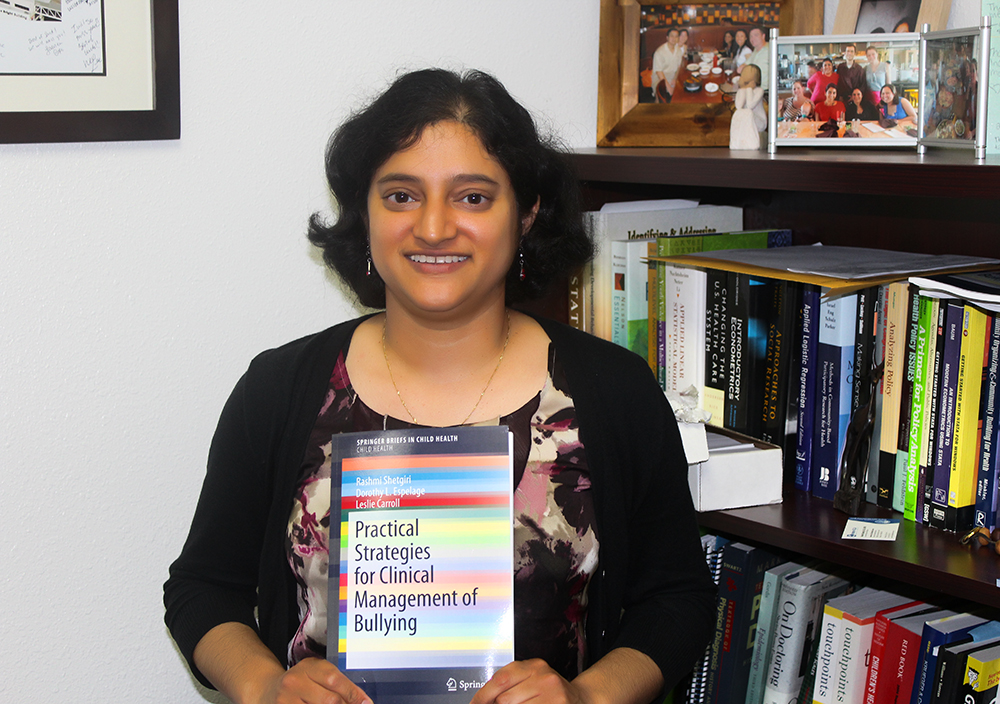by Joseph Lasky, MD
About 1-2 times per month, a meeting is held by a group of young investigators known as HiPo (junior investigators with High Potential for independent research). On July 18, we had one of these talks delivered by our own Dr. Rashmi Shetgiri.
Identifying Trends, Risk, and Protective Factors for Cyberbullying, Rashmi Shetgiri, MD MSHS MSCS
For a definition:
“Bullying is unwanted, aggressive behavior among school aged children that involves a real or perceived power imbalance.”
From <http://www.stopbullying.gov/what-is-bullying/definition/index.html>
Furthermore, as social media, cell phones, and other technologies have developed, a new form of bullying has also arisen:
“Cyberbullying is bullying that takes place using electronic technology. Electronic technology includes devices and equipment such as cell phones, computers, and tablets as well as communication tools including social media sites, text messages, chat, and websites.”
From <http://www.stopbullying.gov/cyberbullying/what-is-it/index.html>
Data from the 2013 School Crime Supplement (SCS) of the National Crime Victimization Survey (NCVS) suggest that nearly one in four students aged 12 to 18 experience some form of bullying (22%) with about 7% experiencing some form of cyberbullying.
Although trends, risk factors, and protective factors are becoming well established for standard bullying, information with regards to cyberbullying is much more limited. Needless to say, children who are victims of any form of bullying may be at higher risk of adverse outcomes, including increased rates of juvenile delinquency, future crime, and mental health issues, among others.
Dr. Shetgiri proposed an analysis of existing large databases and surveys to further define these trends and risk factors for cyberbullying. She is seeking funding for these important studies, and plans to submit a grant application very soon. Please wish her luck!!
The next HiPo meeting takes place August 8, 2016 at noon and will be given by Paul Mathews, Ph.D. who does research on cerebellar neuronal signaling (among other things).

